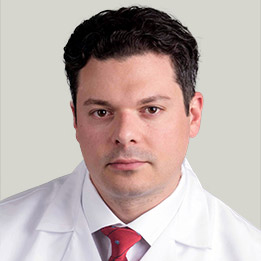Investigating the Breast-Feeding & Orthodontic Connection

GRAYSLAKE, SKOKIE AND KENILWORTH, IL – If you were to think breast-feeding and orthodontics have about as much in common as auto mechanics and gardening, you would be wrong.
The February 2013 issue of the Journal of the American Dental Association included an article about the oral and general health benefits of breast-feeding, and the results are quite interesting to family orthodontists throughout the country.
The article’s authors reviewed literature pertaining to general health protections that breast-feeding provides infants and mothers, as well as explored the connections between breast-feeding, occlusion in the primary dentition and early childhood tooth decay.
This information was of particular interest to Dr. Michael Stosich, who is a breast-feeding proponent.
“If done as advised by the American Academy of Pediatrics, only good can come from breast-feeding,” says Dr. Stosich, who treats patients from Grayslake and surrounding areas including Skokie and Kenilworth, IL.
Studies that compared the health outcomes of breast-fed and formula-fed children noted numerous health advantages associated with breast-feeding, including lower risk of gastroenteritis, severe lower respiratory infections, asthma and sudden infant death syndrome. Evidence also suggested that breast-fed babies might develop a more favorable occlusion of the baby teeth.
Some studies show that active breast-feeding encourages mandibular development by strengthening jaw muscles and improves shaping of the hard palate, according to an article published in the Journal of Human Lactation. The result is proper teeth alignment and fewer problems with malocclusions. This article went on to mention that the largest increments in craniofacial growth happened between birth and age 4, and craniofacial development is 90 percent complete by the time a child reaches age 12.
Some experts go so far as to suggest that breast-feeding may also decrease the risk of your child developing a crossbite, due to the difference in the muscle movements in the mouth, cheeks, tongue and jaws when breast-feeding, compared to being bottle-fed. Dr. Stosich isn’t sold on this notion, however.
“I haven’t heard nor observed narrow palates and crossbites being prevalent among children who weren’t breast-fed as babies,” says Dr. Stosich, who offers Glenview orthodontics for adults and children. In addition to his private orthodontic practice, Dr. Stosich treats patients of the most complex nature at the University of Chicago Medical Center.
However, he agrees that the flexible and soft tissue of a human breast nipple helps shape the hard palate because it flattens and broadens in response to the infant’s tongue action. As your baby nurses, the hard palate is gently shaped by the infant’s tongue to a rounded U-shaped configuration, according to the Journal of Human Lactation article.
“When the palate is shaped properly, this certainly promotes proper teeth alignment and lessens the likelihood of malocclusion,” Dr. Stosich, a provider of Wilmette Invisalign, says.
Dr. Stosich and other members of the American Association of Orthodontists support having children evaluated by an orthodontist by age 7 to determine if bite and alignment issues are present that should be addressed early. Treatment required at this young age is commonly referred to as interceptive treatment. It can be argued that true interceptive treatment begins when parents breast-feed their babies and discourage pacifier and extended bottle use, according to a Dentistry Today article.
A 1987 study referenced in the Journal of Human Lactation article helps further drive home the point. The study involved nearly 10,000 children between age 3 and 17 and evaluated the association between breast-feeding and malocclusion. The data revealed that children who were breast-fed for three months or less had a malocclusion rate of nearly 33 percent. Children breast-fed more than one year had a malocclusion rate just less than 16 percent. In that study, children who were bottle-fed were 1.84 times more likely to have malocclusions than children who were breast-fed.
“I hope this information encourages young moms to breast-feed their babies, because study upon study shows breast-feeding has a host of benefits to a growing baby,” Dr. Stosich says.
© 2013 Dr. Michael Stosich. Authorization to post is granted, with the stipulation that Dr. Michael Stosich is credited as sole source. Linking to other sites from this article is strictly prohibited, with the exception of herein imbedded links.


